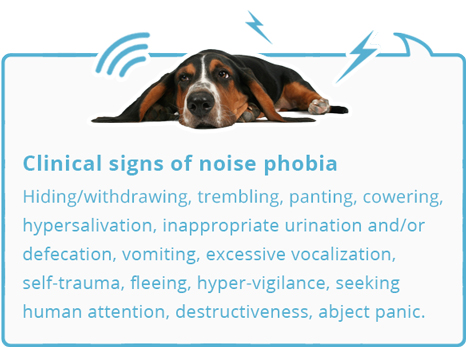About Noise PhobiaPage 4 of 13
Signs & Symptoms
What are the most common signs and symptoms of noise phobia in dogs?
- The behavioral manifestations of noise phobias vary from the inhibited responses of whining, panting and salivating to the more reactive responses of running and escaping.
- In some cases, those responding in a reactive manner may injure both themselves and their environment in their frantic attempt to escape. It is this population of dogs that are most likely to be referred for assistance.
- However, any and all dogs displaying any type of distress response need to receive intervention. Management needs to start at the earliest reported signs as it may require less interventional strategies, leading to greater compliance and more successful management of the dog’s fear leading to a better quality of life.

